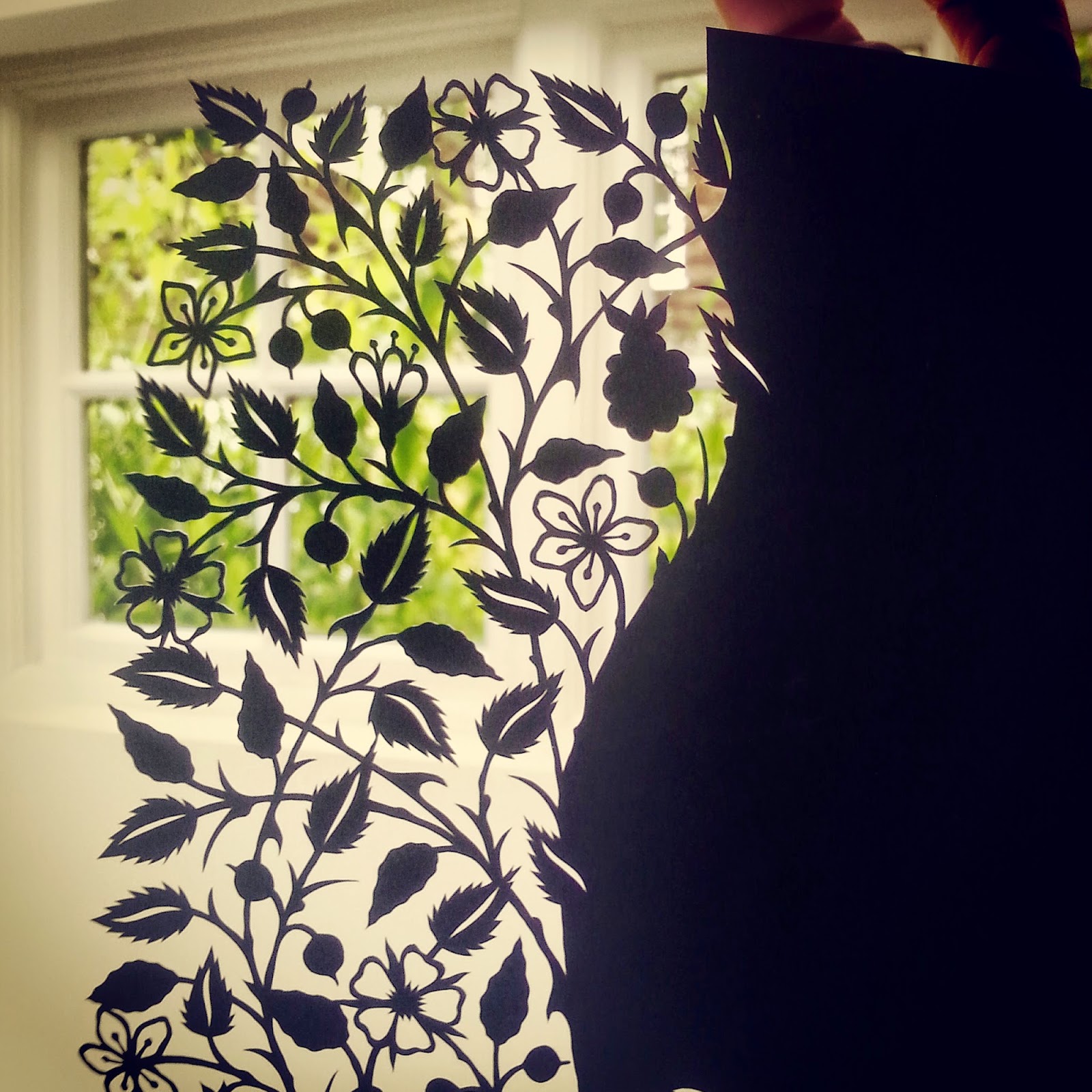So the first thing you need to do is scan your papercut and save it onto a memory card. Once you've done that, plug the memory card into your PC or Mac. Open up your memory card and drag your scanned image into photoshop. See below image.
Check the image is 300dpi. Using the crop tool from the menu bar on the left, trim down your image and press enter or click the green arrow at the bottom right corner of your scanned image.
Remember, this is a scanned image, so you need to clean it up and flatten it. To do this, select the magic wand tool and click on the black area of your image. Make sure the colour swatches in the bottom left of your screen are on the default black and white.
When you've clicked on the black area a flashing dotted line will surround all the selected black on your image. In my picutre, all the black is connected so it's all 'live' when I select it.
You then want to make sure that this area is completely black. To do this, click Edit >FillSelection
Fill selected area with 'Foreground' colour - this is the black.
You then want to click Select>Inverse. This will switch the live selected area from the black to the white. You can then fill the white area with the 'Background' colour in the same way as you filled the black.
Your image is now purely black and white.
In my design I have lines connecting the birds to the border. I don't want these lines in my print, so I need to remove them. To do this, I use the pencil tool selected as 'white'. Draw carefully over the black lines that you no longer need. This will make the birds actually look like they're flying. I also removed the lines that connected the clouds to the border. This will make the clouds look like they're floating.
So now, your image is completely cleaned up and lines removed that you don't want to appear in your print. You can now start the fun part of colouring your design.
To colour your piece you can use the magic wand and the Edit>Fill method - like you used to make your image black and white.
To select multiple areas with the magic wand - eg the separate petals of the flower - select the magic wand tool and click in one of the petals, then holding the shift key, use the magic wand to select the other petals that you want to be the same colour. Then Edit>Fill with the colour of your choice from the colour palette.
Remember to save your image regularly.
If you want your image to be printed, you must make sure your image is 300 dpi.
I hope this isn't too confusing!

































